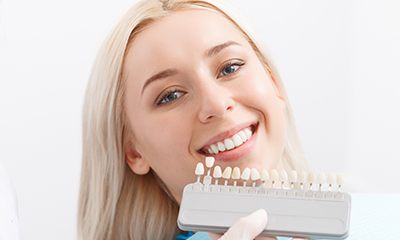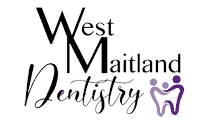Teeth Whitening Do’s and Don’ts

New Year, New Smile!
As the new year begins so do the resolutions. While for some it might be to lose those extra pounds for others it is to improve their smile. One of the best, efficient and cheapest ways to improve your smile is with teeth whitening. Here are some options to help you welcome 2019 with a new smile!
Over the Counter Whitening
Over the counter whitening is a cheap alternative to in-office bleaching systems. These whitening systems start as low as $5 and up. There are several types of whitening products available now, such as toothpastes, powders, mouth rinses, and whitening strips.
Toothpastes and Mouth Rinses
Toothpastes and mouth rinses are great ways to keep your smile bright before and after bleaching your teeth. These products aid in preventing and removing light stains on the outer surface of the tooth. When choosing a toothpaste or mouth rinse to make sure the brand is accepted by the ADA and the toothpaste has fluoride in it to help prevent cavities. For deeper stain removals, whitening systems may be a better alternative.
Whitening Powders
A new trend with whitening is charcoal powders. Charcoal powders sound exactly like what they are, activated charcoal that can contain other ingredients such as oils, clay, sweeteners, and sodium bicarbonate.
The main way the powder whitens is by using its abrasive nature to strip the stain from the enamel. This is a problem because the charcoal often strips not only the stain but the enamel as well. Enamel is the whiter layer of the tooth, so once stripped the more yellow layer dentin will be exposed making it much more difficult to whiten and will increase sensitivity.
Charcoal products are not regulated by the FDA. This means there can be other products in them that could be unsafe if you accidentally ingest.
Whitening Systems
Another over the counter product to consider are whitening systems. Most of these systems have a plastic strip that goes over your teeth. You wear the strip for 15-30 minutes, once or twice a day for seven to fourteen days, or as directed. Whitening strips contain a gel that consists of different ratios of hydrogen peroxide or carbamide peroxide. The most common and well known are Crest Whitestrips.
Crest Whitestrips are the only whitening strips out there that are currently accepted by the ADA (American Dental Association). This means that they have been evaluated by the ADA and have been found to not only be effective but more importantly safe to use. When using whitening strips make sure to familiarize yourself with the instruction guide and follow directions as indicated.
In-Office Treatments
In-office treatments usually have the same concept as at-home kits but consist of a higher concentrated gel, which leads to faster and often better results.
Light Activated Systems
A common type of whitening that you may have heard of is Zoom whitening. First, the gums and lips are covered up for protection. After this step, the hydrogen peroxide whitening gel is placed on the teeth. A UV light is then placed for 15 minutes to activate the gel. Immediately afterward another gel is placed on the teeth but this time to reduce sensitivity. Zoom may not be the best option if you have sensitive teeth or if you are sensitive to the mild heat produced by the UV light. The treatment takes less than an hour and you will be sent home with custom bleaching trays for touch-ups.
Custom Bleaching Trays
This procedure has a similar concept of over the counter bleaching systems but usually offers better results. Your dentist takes molds of your teeth and then fabricates custom trays out of a thermoplastic material. The patient places a hydrogen peroxide gel in the trays in the comfort of their homes. Since the trays are molded around your teeth, the gel can flow into and around all those nooks and crannies that may be harder for strips to reach. Custom trays lessen the chances of gum irritation because the trays are fit to the exact shape of your teeth. Another benefit is being able to reuse the trays by just having to buy the gel refill.
Common Complaints
The most common complaint we usually hear is sensitivity. We recommend you use a sensitivity toothpaste two weeks before, during and after the whitening process. If teeth are still sensitive while whitening ask about custom desensitizing treatments that are offered at your dentist’s office. After the whitening treatment is finished the sensitivity should subside in a few days.
Another common complaint is the irritation of the gums. It is important with these over the counter whitening systems to wipe off excessive gel to ensure this doesn’t occur. While using custom trays make sure to place only the amount of gel as recommended by your dentist.
Finally, the last complaint that we often hear is the teeth not getting as white as the patient wants. It’s important when using any type of whitening to remember duration isn’t as important as frequency. Make sure to be consistent in wearing them every day and not to skip any days. If you start feeling sensitivity, decrease the amount of time you wear them for but make sure you don’t skip any days to get the full effect!
Take-Home Points
After you whiten maintain results with these tips:
- Avoid dark foods and drinks such as coffee, tea, red wine, blueberries, etc.
- Brush your teeth twice a day and floss daily
- Avoid smoking and chewing tobacco
- Visit your dentist twice a year for a cleaning
Always remember to consult your dentist before starting any treatments. Contact our office for any questions or to book an appointment to go over your options and happy whitening!



